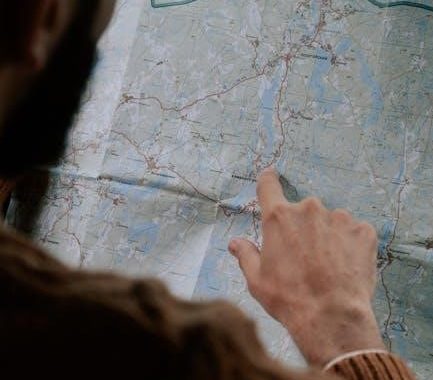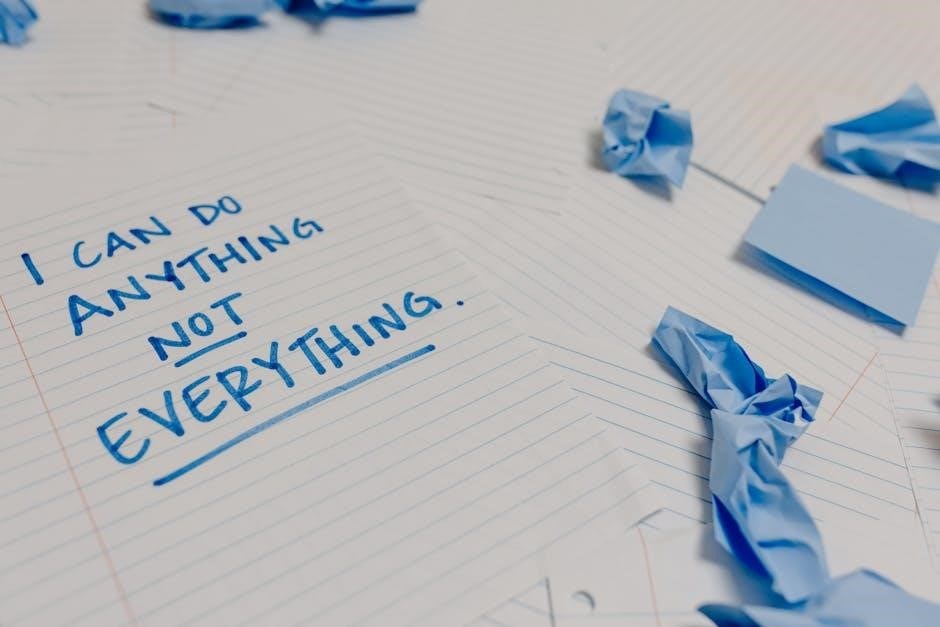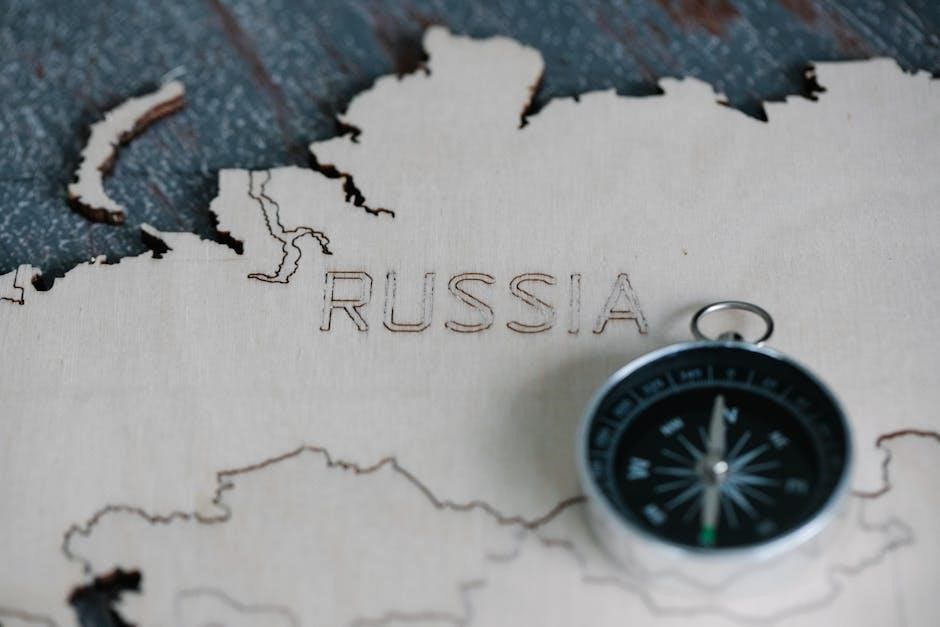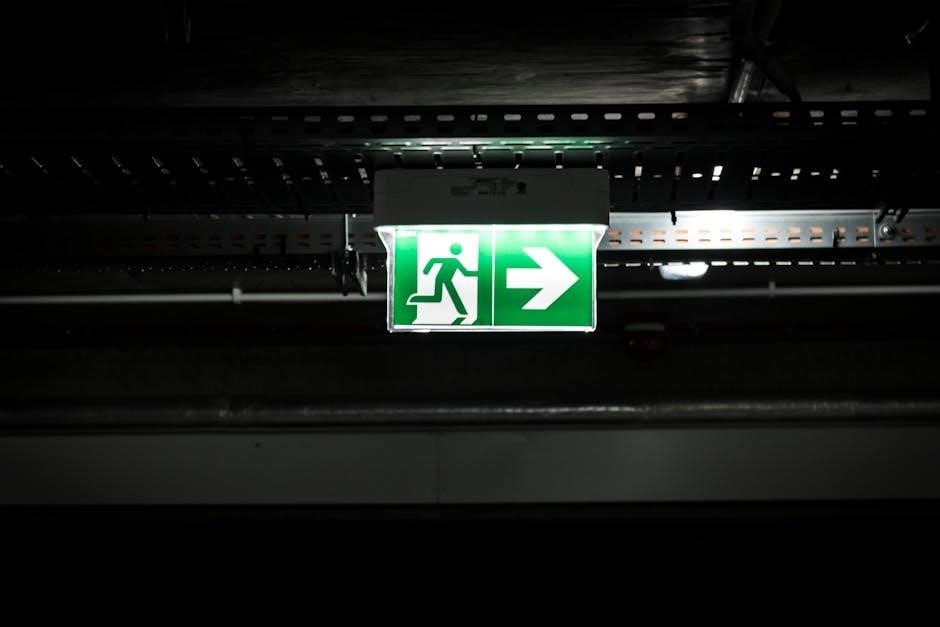a guide to getting rid of almost everything pdf

a guide to getting rid of almost everything pdf
Discover the transformative power of decluttering with Patricia Marx’s guide, offering practical strategies to simplify your life, downsize effectively, and maintain a clutter-free lifestyle effortlessly.
Understanding the Importance of Decluttering
Decluttering is more than just organizing space; it’s about creating a clearer mind and a more efficient lifestyle. By removing unnecessary items, you reduce stress, improve focus, and gain a sense of control over your environment. Patricia Marx’s guide highlights how decluttering can transform your life by helping you break free from the emotional weight of possessions. It also emphasizes the importance of mindful consumption and sustainable disposal methods. Understanding the value of decluttering lies in its ability to simplify your life, allowing you to appreciate what truly matters. This process fosters gratitude, reduces decision fatigue, and encourages a more intentional approach to living.
How Decluttering Can Transform Your Life
Decluttering can profoundly transform your life by creating a sense of clarity and freedom. It helps reduce stress and anxiety caused by a chaotic environment, allowing you to focus on what truly matters. By letting go of unnecessary items, you gain more time and energy for meaningful activities. Patricia Marx’s guide emphasizes that decluttering not only simplifies your physical space but also fosters emotional well-being. It encourages intentional living, helping you develop healthier habits and a greater appreciation for the things you truly value. This transformation can lead to a more organized, productive, and fulfilling life, both at home and beyond.

Key Principles of Minimalism
Minimalism emphasizes simplicity, intentionality, and reducing unnecessary clutter, focusing on what truly adds value to life, creating a more organized, peaceful, and purposeful living environment.
What is Minimalism?
Minimalism is a lifestyle centered on simplicity, focusing on what is truly essential. It involves reducing unnecessary clutter and possessions, emphasizing purposeful living. By prioritizing what adds value, minimalism creates a peaceful environment, fostering clarity and intentionality. This approach encourages mindful consumption and resourcefulness, often leading to financial savings and a more organized space. Minimalism is not just about fewer possessions but about living deliberately, ensuring each item serves a meaningful purpose. It promotes a shift from materialism to experiences and personal growth, aligning with modern desires for sustainability and a clutter-free existence.

The Benefits of Embracing a Minimalist Lifestyle
Embracing minimalism offers numerous benefits, including reduced stress and increased focus. By decluttering, individuals gain more free time and financial savings. Minimalist living fosters gratitude and contentment, as it shifts focus from material possessions to meaningful experiences. It also promotes environmental sustainability by reducing waste. A clutter-free space enhances productivity and mental clarity, allowing for better decision-making. Additionally, minimalism encourages intentional spending and resourcefulness, leading to a more organized and purposeful life. Overall, it creates a balanced and fulfilling lifestyle, aligning with personal values and goals. Minimalism is not just a trend but a sustainable way to live mindfully and intentionally.

Patricia Marx’s Guide to Getting Rid of Almost Everything
Patricia Marx’s guide provides practical strategies for decluttering, helping you simplify life and embrace mindful living through effective organizing and intentional decision-making with proven techniques.
Overview of the Article
Patricia Marx’s guide, featured in The New Yorker, offers a comprehensive approach to decluttering, providing practical strategies for simplifying life. The article discusses the challenges of letting go of possessions and explores creative solutions for donating, recycling, or selling items. Marx emphasizes the importance of mindful consumption and intentional living, encouraging readers to rethink their relationship with material goods. With humor and insight, she shares tips for downsizing, organizing, and maintaining a clutter-free environment, making it a must-read for anyone seeking to embrace a minimalist lifestyle and find freedom in simplicity. Her guide is both inspiring and actionable.
Key Takeaways from the Guide
Patricia Marx’s guide emphasizes the importance of intentionality when decluttering, urging readers to let go of items that no longer serve a purpose. She advocates for a mindful approach, suggesting that each item be evaluated for its utility or sentimental value. Marx also provides practical advice, such as using the four-box method—Keep, Sell/Donate, Trash, and Store—to organize the decluttering process. Additionally, she highlights the benefits of downsizing, including reduced stress and a sense of freedom. Her guide encourages readers to adopt sustainable practices, like donating and recycling, to ensure a clutter-free and organized lifestyle. These takeaways make her guide both practical and inspiring for those embarking on a decluttering journey.
Practical Advice for Decluttering
Patricia Marx’s guide offers actionable tips for decluttering, such as starting small and focusing on one area at a time. She suggests using the four-box method to categorize items into Keep, Sell/Donate, Trash, and Store. Marx also emphasizes the importance of setting clear goals and maintaining momentum. She advises letting go of duplicates and items no longer in use, while keeping only what brings joy or serves a purpose. Additionally, she recommends scheduling regular decluttering sessions to maintain a clutter-free space. Her practical advice makes the process manageable and achievable, helping readers create a more organized and intentional living environment.

Strategies for Decluttering
Effective strategies for decluttering include the four-box method and organizing by category to simplify decision-making and achieve a clutter-free environment efficiently and maintain it over time.
The Four-Box Method: Keep, Sell/Donate, Trash, Store
The four-box method is a simple yet effective strategy for decluttering. Each item is placed into one of four categories: Keep, Sell/Donate, Trash, or Store. This method ensures that decisions are made efficiently, preventing clutter from accumulating again. Items you truly need or love go into the “Keep” box. Those in good condition but no longer needed can be sold or donated. Broken or useless items belong in the “Trash” box. Finally, items you want to keep but don’t need immediate access to go into “Store.” This approach helps maintain organization and reduces stress during the decluttering process.
How to Decide What to Keep and What to Let Go
The key to deciding what to keep and what to let go lies in evaluating the item’s value and purpose. Ask yourself if it brings joy, serves a functional need, or holds sentimental worth. If an item is broken, outdated, or unused, it’s likely time to let it go. Patricia Marx suggests adopting a mindful approach, focusing on what truly enhances your life. This method encourages intentional decisions, helping you create a space that reflects your values and lifestyle. Remember, letting go of unnecessary items is an opportunity to simplify your life and embrace a more organized, clutter-free existence.
Decluttering by Category: Clothes, Books, Papers, and More
Decluttering by category helps streamline the process, making it more manageable. Start with clothes: sort them into keep, donate, or discard piles, focusing on items that fit and bring joy. For books, consider keeping favorites and letting go of others—donate or sell them to give them new life. Papers can be digitized to reduce physical clutter. Patricia Marx’s guide encourages tackling one category at a time, ensuring thoughtful decisions. By addressing each group methodically, you can create a more organized and intentional space, fostering a clutter-free lifestyle that aligns with your values and needs.

Sustainable Ways to Dispose of Items
Donate gently used items to those in need, recycle materials responsibly, and repurpose creatively to minimize waste, aligning with eco-friendly practices for a sustainable lifestyle.
Donating and Recycling
Donating and recycling are essential steps in sustainable disposal. Donate items like clothing, books, and furniture to charities or local communities, extending their lifespan. Recycling ensures materials like paper, glass, and metal are repurposed, reducing environmental impact. Many organizations accept specific items, and some even offer pickup services. Always check the condition and suitability of items before donating. By choosing to donate and recycle, you contribute to a circular economy and help reduce landfill waste. This approach aligns with eco-friendly values and supports those in need while promoting resource efficiency.
Selling Unwanted Items
Selling unwanted items is a practical way to declutter while earning extra cash. Platforms like eBay, Craigslist, and Facebook Marketplace make it easy to list items for sale. Garage sales or yard sales are also effective for selling multiple items at once. Consider consignment shops for higher-value goods like designer clothing or furniture. Consider the item’s condition, demand, and original price when setting prices. Clear photos and detailed descriptions can attract more buyers; Additionally, apps like Poshmark or Mercari cater to specific categories, ensuring your items reach the right audience. Selling not only declutters your space but also turns unwanted possessions into income.
Eco-Friendly Disposal Methods
Eco-friendly disposal methods prioritize reducing waste and minimizing environmental impact. Donate gently used items to charities, shelters, or community centers to give them a new life. Recycling is another sustainable option, ensuring materials like paper, glass, and metal are repurposed. For items that cannot be donated or recycled, consider repurposing them into creative projects. Hazardous waste, such as batteries or electronics, should be disposed of through designated facilities to prevent contamination. Composting organic waste reduces landfill use and enriches soil. Proper disposal methods not only protect the environment but also promote a more sustainable lifestyle, aligning with the principles of mindful decluttering.

Emotional Challenges of Decluttering
Decluttering often stirs emotional struggles, such as sentimental attachment to items and decision fatigue, creating inner conflict and making it difficult to let go of cherished possessions.
Letting Go of Sentimental Items
Decluttering sentimental items can be emotionally daunting, as each item often holds memories or emotional value. Patricia Marx’s guide suggests creating a “maybe” box for such items, allowing time to decide their fate.
Taking photos of sentimental objects can preserve memories without the clutter. Consider keeping only items that bring joy or serve a purpose, while letting go of the rest.
This process requires self-compassion and honesty about whether the item truly adds value to your life. Starting small and gradually tackling sentimental clutter can make the task less overwhelming.
Overcoming Decision Fatigue
Decision fatigue is a common obstacle during decluttering, as constant choices can lead to mental exhaustion. To combat this, Patricia Marx suggests simplifying decisions by categorizing items into four boxes: Keep, Sell/Donate, Trash, and Store. This method streamlines the process, reducing overwhelm. Setting a timer or tackling one area at a time can also help maintain focus. Additionally, practicing self-compassion and reminding yourself of your decluttering goals can motivate you to keep going. By breaking tasks into manageable steps, you can conserve energy and make decisions more efficiently, ensuring progress without burnout.
Sharing the Experience with Family and Friends
Decluttering can be more manageable and rewarding when shared with others. Patricia Marx suggests involving family and friends to create a supportive environment. Assigning tasks or hosting a decluttering party can make the process enjoyable. Open communication about goals and boundaries helps ensure everyone is aligned. Sharing the experience fosters accountability and lightens the emotional burden. Encouraging others to participate can also inspire them to declutter their own spaces. By turning it into a collaborative effort, you can build stronger connections while creating a clutter-free home together.

Decluttering for Moving or Downsizing
Decluttering for moving or downsizing simplifies your transition, helping you let go of unnecessary items and create a fresh start with better organization and reduced moving costs.
How Decluttering Can Simplify Your Move
Decluttering before a move reduces stress and saves time by minimizing items to pack and transport. It lowers moving costs, as fewer belongings mean less space and weight. Sorting items into categories like “keep,” “donate,” and “discard” helps prioritize what’s essential. This process also allows you to emotionally detach from unused items, creating a sense of renewal. A clutter-free start in your new home promotes organization and clarity. By addressing clutter early, you avoid last-minute chaos and ensure a smoother transition. This approach not only simplifies logistics but also fosters a fresh, intentional lifestyle in your new space.
Creating a Moving Budget
Creating a moving budget is essential to avoid financial stress. Start by listing all expenses: packing supplies, truck rental, professional movers, fuel, food, and lodging. Decluttering helps reduce costs by minimizing items to move. Allocate funds wisely, prioritizing essentials like durable boxes and labor costs. Consider DIY packing to save on materials. Research and compare quotes from moving companies to find affordable options. Include a contingency fund for unexpected charges. Tracking expenses ensures you stay within budget. A well-planned budget not only streamlines the moving process but also supports a clutter-free and cost-effective transition to your new home.
Packing Tips for a Clutter-Free Start
Packing for a move offers a fresh start. Begin by decluttering beforehand to ensure only essentials make the cut. Use sturdy boxes and clear labels for easy identification. Consider the four-box method: keep, donate/sell, recycle, and discard. Pack room by room to maintain organization. Keep frequently used items accessible in separate bags. Avoid overloading boxes to prevent damage. Plan ahead for an essentials box with toiletries and a change of clothes. Decluttering before packing saves time and reduces moving costs. Start your new chapter clutter-free with these practical tips.

Maintaining a Clutter-Free Life
Adopt habits like regular decluttering, mindful consumption, and organized storage to sustain a minimalist lifestyle. Patricia Marx’s guide emphasizes creating routines to prevent clutter buildup and foster lasting simplicity.
Building Habits for Long-Term Minimalism
Establishing consistent habits is key to maintaining minimalism; Patricia Marx’s guide suggests implementing regular decluttering sessions, such as weekly tidying or seasonal purges, to prevent clutter buildup. Adopting mindful consumption practices, like the “one-in-one-out” rule, helps avoid unnecessary purchases. Organized storage systems and intentional buying habits also play a role in sustaining a clutter-free lifestyle. Starting small and celebrating progress fosters motivation. By integrating these practices into daily routines, individuals can cultivate a lasting minimalist mindset and enjoy the freedom that comes with it.
Regular Decluttering Routines
Regular decluttering routines are essential for maintaining a clutter-free lifestyle. Patricia Marx’s guide suggests implementing daily, weekly, and seasonal decluttering practices. Start with small tasks, like tidying up for 10 minutes each morning or dedicating an hour on weekends to organize specific areas. Seasonal decluttering, such as spring cleaning, helps address deeper organizational needs. Incorporate habits like the “one-touch rule” for handling items immediately. Use the four-box method—keep, donate/sell, recycle, and discard—to streamline decisions. Consistency is key to preventing clutter buildup and fostering a sense of control and calm in your living space.
Staying Motivated on Your Minimalist Journey
Staying motivated on your minimalist journey requires consistent effort and mindset shifts. Patricia Marx’s guide emphasizes setting clear goals and celebrating small victories to maintain momentum. Surround yourself with visual reminders of your progress, such as before-and-after photos of decluttered spaces. Share your journey with friends or join online communities for accountability. Reward yourself for milestones, like treating yourself to an experience instead of buying something. Regularly revisit your “why” to reconnect with your motivation. Remember, minimalism is a process, and even small steps contribute to a more organized, intentional life. Keep your vision clear and stay committed to your goals.

Additional Resources
Explore Patricia Marx’s guide, download the free 20-page decluttering PDF, and join online communities for support. Discover recommended reading on minimalism to enhance your journey.
Downloadable Decluttering Guides
Patricia Marx’s guide, “A Guide to Getting Rid of Almost Everything,” offers a comprehensive approach to decluttering. Available as a free 20-page PDF, it provides practical strategies for downsizing, organizing, and maintaining a clutter-free lifestyle. This downloadable resource is perfect for those seeking actionable steps to simplify their lives. It includes tips on categorizing items, decision-making processes, and sustainable disposal methods. The guide emphasizes mindful consumption and creating a meaningful relationship with possessions. Whether you’re moving, downsizing, or embracing minimalism, this guide serves as an invaluable tool. Download it today to embark on your decluttering journey with confidence and clarity.
Recommended Reading on Minimalism
Patricia Marx’s “A Guide to Getting Rid of Almost Everything” is a must-read for those embracing minimalism. Her humorous yet practical insights offer strategies for decluttering and downsizing. Another notable read is Marie Kondo’s “The Life-Changing Magic of Tidying Up,” which introduces the KonMari Method. Dave Bruno’s “The 100 Thing Challenge” shares a personal journey of reducing possessions to 100 items. These books provide diverse perspectives, helping readers adopt a minimalist lifestyle. Whether you’re seeking inspiration or actionable advice, these reads are essential for simplifying your life and fostering a deeper connection with your belongings.
Online Communities for Support
Joining online communities can provide valuable support and motivation for your decluttering journey. Platforms like Facebook groups, Reddit forums, and specialized minimalism communities offer spaces to share experiences and tips. For example, Reddit’s r/Minimalism has millions of members discussing decluttering strategies and lifestyle changes. Similarly, Facebook groups like “Minimalist Decluttering” connect individuals worldwide, fostering accountability and inspiration. These communities often share resources, including guides like Patricia Marx’s “A Guide to Getting Rid of Almost Everything,” and host challenges to help you stay on track. Engaging with others who are simplifying their lives can make the process feel less isolating and more achievable.
Embrace the freedom of decluttering with Patricia Marx’s guide, empowering you to transform your space and mindset, fostering clarity, renewal, and a more intentional way of living.
Final Thoughts on Decluttering
Patricia Marx’s guide offers a comprehensive roadmap to decluttering, emphasizing the importance of intentionality and mindfulness. By letting go of unnecessary items, you create space for what truly matters, fostering clarity and renewal. The process, while challenging, leads to a more organized, sustainable lifestyle. Key takeaways include donating, recycling, and eco-friendly disposal methods. Building habits like regular decluttering and maintaining a clutter-free environment ensures long-term success. Embrace the journey as an opportunity to redefine your relationship with possessions and cultivate a more meaningful, minimalist way of living. Start small, stay consistent, and celebrate progress along the way.
Encouragement for Starting Your Journey
Embrace decluttering as a liberating journey toward simplicity and clarity. Patricia Marx’s guide provides practical wisdom to help you overcome hesitation and transform your space. Start small, celebrate progress, and remember, every step brings you closer to a more organized, meaningful life. Decluttering is not just about letting go of items—it’s about reclaiming time, reducing stress, and discovering what truly matters. Take the first step with confidence, knowing that a clutter-free life awaits. Stay motivated, and enjoy the freedom that comes with living intentionally. Your journey to minimalism is a path to renewal and peace of mind.